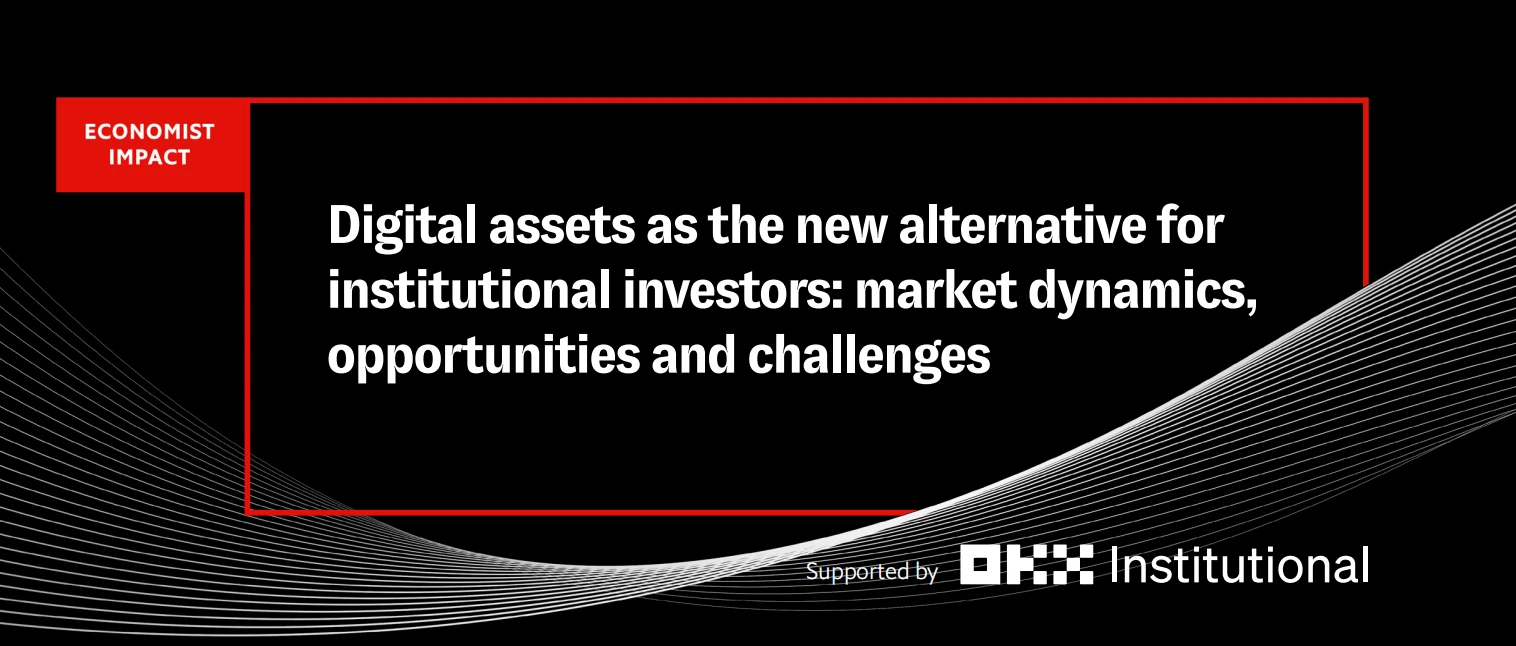
The report, commissioned by OKX, shows that more institutional investors are researching new digital assets and planning to include them in their portfolios.
• Institutional investors continue to be bullish on digital assets and in addition to holding cryptocurrencies, they are also embracing instruments such as staking and derivatives.
• Despite continued optimism, further adoption faces challenges.
Institutional investors are expected to increase digital asset allocations in their portfolios to 7% by 2027. The market size of tokenized assets is expected to exceed $10 trillion by 2030, indicating significant growth for the industry. However, the new report commissioned by OKX and written by The Economist notes that challenges remain.
Currently, asset managers allocate 1% -5% of their assets under management (AUM) to digital assets.
“Digital asset allocations in institutional portfolios have been focused on cryptocurrency trading, with Bitcoin and Ethereum being the main investment categories,” the report states. “Institutional investors have shown greater optimism towards digital assets, driven by a growing number of investment vehicles that are no longer limited to cryptocurrencies.”
The report stated that 51% of institutional investors are considering spot cryptocurrency allocation, 33% of institutional investors are considering staking digital assets, 32% of institutional investors are exploring cryptocurrency derivatives, and 36% of institutional investors are considering tracking cryptocurrency funds.
Now, more and more institutional investors are considering investing in other digital assets besides holding cryptocurrencies, such as staking, crypto derivatives, and tokenized bonds. Among them, the rise of digital assets in the market is particularly prominent, such as the European Investment Banks £50 million ($66 million) digital native bond, $1 billion in tokenized U.S. Treasury bonds, and HK$6 billion ($766.8 million) in Hong Kong digital currency bonds.
The report points out that custodians also play an important role in helping institutional investors accept digital assets. 80% of the traditional and crypto hedge funds surveyed use custodians. In Asia, many crypto custodians are obtaining the same custodian licenses as their traditional financial counterparts, such as the Trust or Company Service Provider (TCSP) in Hong Kong. In Singapore, the countrys Monetary Authority has created its own crypto custody framework.
However, some challenges remain, such as a lack of regulatory coordination.
The report states: The lack of uniformity in regulatory frameworks across jurisdictions creates uncertainty and makes it difficult for institutional investors to meet compliance requirements and manage risks associated with regulatory changes. The report also praises Europes MiCA as a model of effective regional regulation.
“The different approaches taken by different regions could lead to market instability and complicate the integration of digital assets into investment portfolios by institutions,” the authors continued.
The report also noted that fragmented liquidity is another concern for investors as it could lead to market instability and make it difficult for institutions to effectively execute trades in the digital asset space.
“The fragmentation of liquidity across different blockchain networks and digital asset markets can lead to price inefficiencies and pose significant challenges to institutional investors processing large-scale transactions,” the report reads.
Some have tried to solve this problem using techniques such as native token transfers, which is considered an evolution.
As CoinDesk previously reported, native token transfers enable the seamless movement of tokens across chains while maintaining their unique properties and ownership, unlike creating multiple non-fungible versions of wrapped assets.
The OKX report draws similar conclusions to a recent Nomura survey , which found that 54% of Japanese institutional investors plan to invest in cryptocurrencies within the next three years, with 25% of investors having a positive attitude toward digital assets and preferring to allocate 2%-5% of their AUM to these investments.










